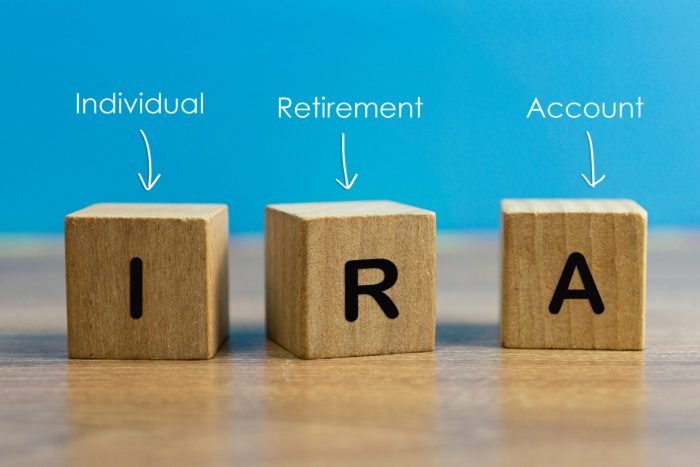Bank of America IRA account fees: Yeah, we know, nobody
-loves* talking about fees, but understanding them is key to maximizing your retirement savings. This isn’t some boring lecture; we’re breaking down everything you need to know about those sneaky charges, from traditional IRAs to Roth and rollovers. We’ll spill the tea on fee waivers, compare BofA to the competition, and show you how to keep more of your hard-earned cash in your pocket (and your retirement account!).
So, I’m looking into Bank of America IRA account fees – they’re kinda steep, right? I’m considering moving some funds, and the speed of that transfer is a big deal. Checking the cit bank external transfer time might help me decide if it’s worth the hassle of switching banks to potentially save on those Bank of America IRA fees in the long run.
It all depends on how long the transfer actually takes.
We’ll cover the nitty-gritty details of different account types, minimum balance requirements, and how those fees can actually impact your long-term investment returns. Think of this as your ultimate guide to navigating the world of Bank of America IRA fees – so you can chill knowing you’re making smart financial moves.
Bank of America IRA Account Fees
Understanding the fee structure associated with a Bank of America IRA account is crucial for maximizing your retirement savings. Various fees can impact your investment returns over time, so a thorough understanding is essential before opening an account. This article provides a comprehensive overview of Bank of America IRA account fees, including potential waivers, comparisons with competitors, and strategies for minimizing their impact.
Account Fees Overview

Source: madisontrust.com
Bank of America offers several IRA account types, each with its own fee structure. These fees can include annual maintenance fees, transaction fees, and potentially other charges depending on the specific account and services used. The fees can vary significantly based on the account type (Traditional IRA, Roth IRA, Rollover IRA), account balance, and the specific services utilized.
For example, a higher-tier account might offer fee waivers or lower fees compared to a basic account. Transaction fees may apply for activities like wire transfers or excessive trades. Understanding these nuances is crucial for making informed decisions.
The following table summarizes potential fees across different Bank of America IRA account types. Note that these are examples and may not reflect the complete range of fees or current pricing. It’s always best to consult Bank of America’s official fee schedule for the most up-to-date information.
| Fee Type | Traditional IRA | Roth IRA | Rollover IRA |
|---|---|---|---|
| Annual Maintenance Fee | $0 – $50 (depending on balance) | $0 – $50 (depending on balance) | $0 – $50 (depending on balance) |
| Transaction Fee (per trade) | $0 – $25 (depending on account type) | $0 – $25 (depending on account type) | $0 – $25 (depending on account type) |
| Wire Transfer Fee | $30 | $30 | $30 |
| Account Closure Fee | $25 | $25 | $25 |
Fee Waivers and Exceptions
Bank of America may waive certain IRA account fees under specific circumstances. These waivers are often tied to account balances, age, or specific banking relationships. Eligibility requirements vary depending on the fee and the individual’s circumstances.
To request a fee waiver, customers typically need to contact Bank of America customer service. Providing supporting documentation, such as proof of age or a statement showing a qualifying account balance, is usually required. The process generally involves submitting a request through a phone call, online portal, or in-person visit to a branch.
- Maintaining a minimum account balance.
- Being a Preferred Rewards member.
- Reaching a certain age (e.g., retirement age).
- Having a specific combination of Bank of America accounts.
Comparison with Competitors
Comparing Bank of America’s IRA account fees with those of competitors like Fidelity and Schwab helps investors assess value. While specific fees can fluctuate, a general comparison provides a helpful benchmark. The impact of these fee differences varies greatly depending on the investor’s account balance and investment strategy.
| Feature | Bank of America | Fidelity | Schwab |
|---|---|---|---|
| Annual Fee (Example) | $0-$50 | $0 (for many accounts) | $0 (for many accounts) |
| Transaction Fees (Example) | $0-$25 | Varies by account and trade type | Varies by account and trade type |
| Minimum Balance Requirements | Varies by account | Varies by account | Varies by account |
Impact of Fees on Investment Returns
Source: alamy.com
Even seemingly small fees can significantly impact long-term investment returns. Compounding over many years, these fees can substantially reduce the overall growth of a retirement portfolio. For example, a 1% annual fee on a $100,000 investment could reduce the final balance by thousands of dollars after 20 years.
Strategies to minimize the effect of fees include choosing low-cost investment options, maintaining high account balances to qualify for fee waivers, and consolidating accounts to reduce the overall number of fees paid.
Account Minimums and Requirements
Meeting minimum balance requirements is often crucial for avoiding certain IRA account fees. Failure to meet these requirements can result in the imposition of fees that otherwise would be waived. The specific minimum balance varies depending on the account type and the fee in question.
Opening and maintaining a Bank of America IRA account while minimizing fees involves careful planning. It’s important to understand the fee schedule and minimum balance requirements before opening an account and to actively monitor the account balance to avoid incurring unnecessary charges.
Understanding Fee Statements, Bank of america ira account fees

Source: 0spx.com
Bank of America IRA account fee statements typically include a detailed breakdown of all charges incurred during a given period. Understanding these statements is essential for tracking expenses and identifying any potential errors.
Common fee-related terms include annual maintenance fees, transaction fees, wire transfer fees, and account closure fees. A clear understanding of these terms is vital for interpreting the fee statement accurately.
| Line Item | Description | Amount |
|---|---|---|
| Annual Maintenance Fee | Annual fee for maintaining the account. | $25 |
| Transaction Fee | Fee for each trade executed. | $10 |
| Wire Transfer Fee | Fee for transferring funds via wire. | $30 |
| Subtotal | Sum of all fees. | $65 |
Customer Service and Fee Disputes
Contacting Bank of America customer service regarding IRA account fees can be done through various channels, including phone, online chat, and in-person visits to a branch. Disputing a fee involves providing documentation supporting the claim of an incorrect charge. Effective communication involves clearly stating the issue, providing supporting documentation, and maintaining a polite and professional tone.
Closing Notes
So, there you have it – the inside scoop on Bank of America IRA account fees. While fees are a reality, understanding them is the first step to minimizing their impact. By knowing what to expect, you can choose the right account type, meet minimum balance requirements, and even snag a fee waiver if you qualify. Remember, your retirement is too important to leave to chance, so do your homework, and get ready to slay those retirement goals!